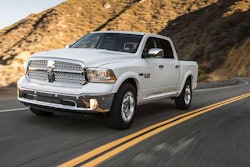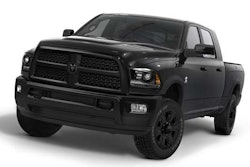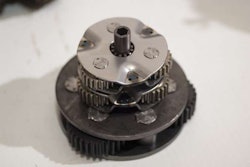 Ford’s F-150 X1 Prototype truck was modeled after a 2009 model.
Ford’s F-150 X1 Prototype truck was modeled after a 2009 model.When the 2015 Ford F-150 goes on sale later this year it will bring closure to a development process that has spanned nearly five years.
Since 2009, Raj Nair, Group Vice President, Global Product Development, says Ford has asked hundreds of engineers, drivers and technicians to work to “actually break the F-150.”
In 2009, the U.S. was just starting to recover from a deep recession and auto sales were at historical lows. Most vehicle manufacturers were putting research and development on the shelf. Ford decided to totally reinvent the country’s most popular, and most successful, truck.
“Innovating in this environment was as difficult a challenge as we have faced,” Nair says.
Ford developed 11 F-150 prototypes, each of which looked identical to the 2009 F-150. The eleventh time proved to be the charm.
Built on a 2009 F-150 chassis, the X1 Prototype has been through the equivalent of 10 years of extreme hard-use testing with the aluminum alloy body that is set to become a staple of the 2015 truck.
The X1 Prototype vehicle will have the equivalent of more than 10 million miles in testing when the truck goes on sale – more than double the 1996 model year and 2 million more than 2009, Ford says.
“Everybody knew we had a winner there,” Peter Reyes, 2015 Ford F-150 Chief engineer, says of the X1 Prototype.
With test results in-hand, Bruno Barthelemy, Ford’s global chief engineer for body structures, says aluminum prototypes were passed to customers in the mining and construction sector who would put the alloy to harsh real-world field trials.
“It’s sad when you’re an engineer to watch them abuse a truck like that,” he joked.
Engineer Pete Friedman says field testers used the trucks, which equipped with aluminum beds, for two years without realizing they were aluminum construction. But real-world applications revealed the truck needed a higher gauge base in its bed and that the inner panel of the tailgate needed to be re-engineered.
The lightweight aluminum alloy material cuts 700 pounds from the F-150, and 70 percent of that savings comes from the cargo bed.
Aside from weight-savings, aluminum offers other benefits. Ford Engineer John Caris says aluminum body panels are backed by a polymer that makes them more “ding and dent resistant” than their steel counterparts, while also dampening noise in the cabin.









